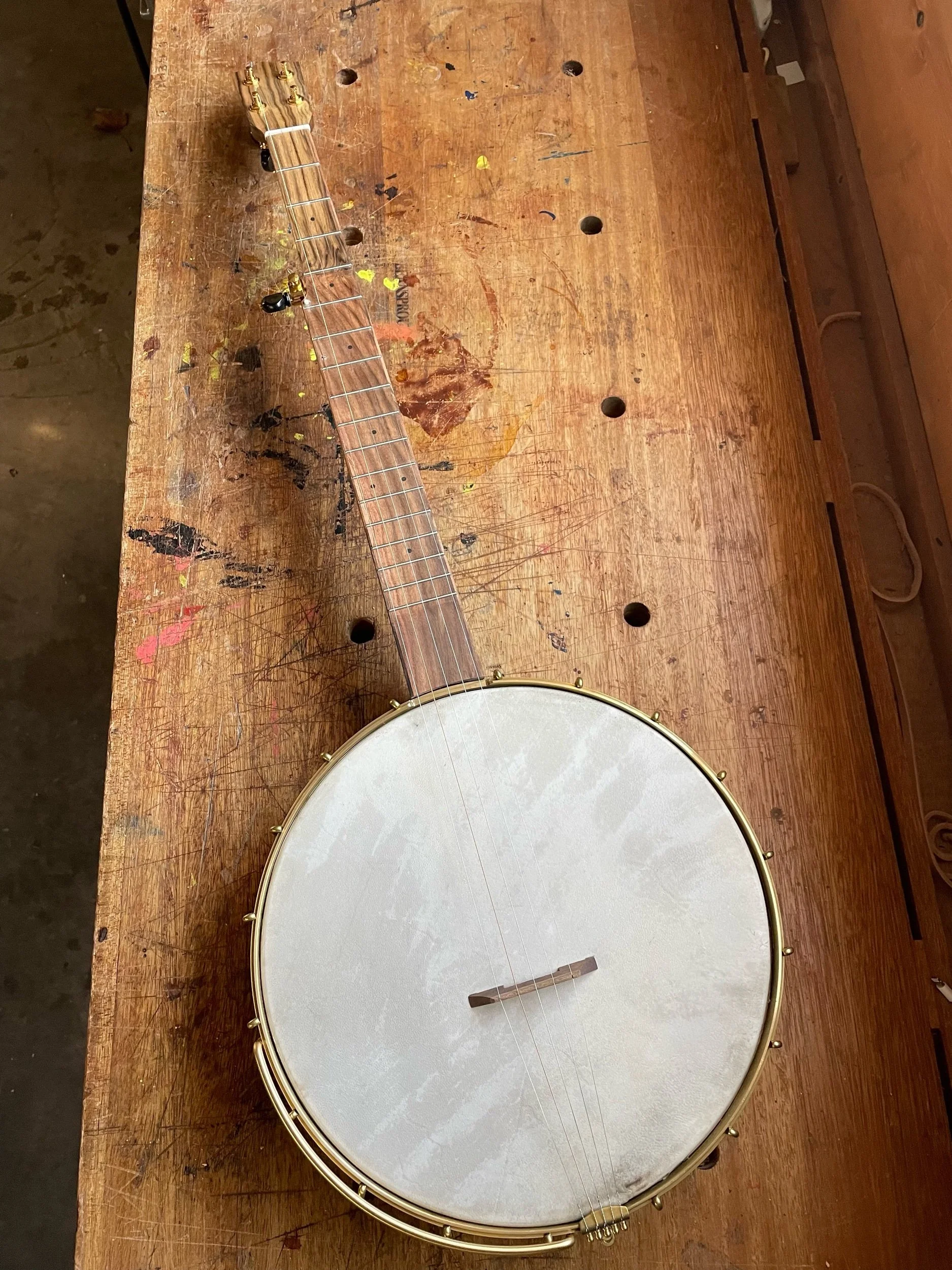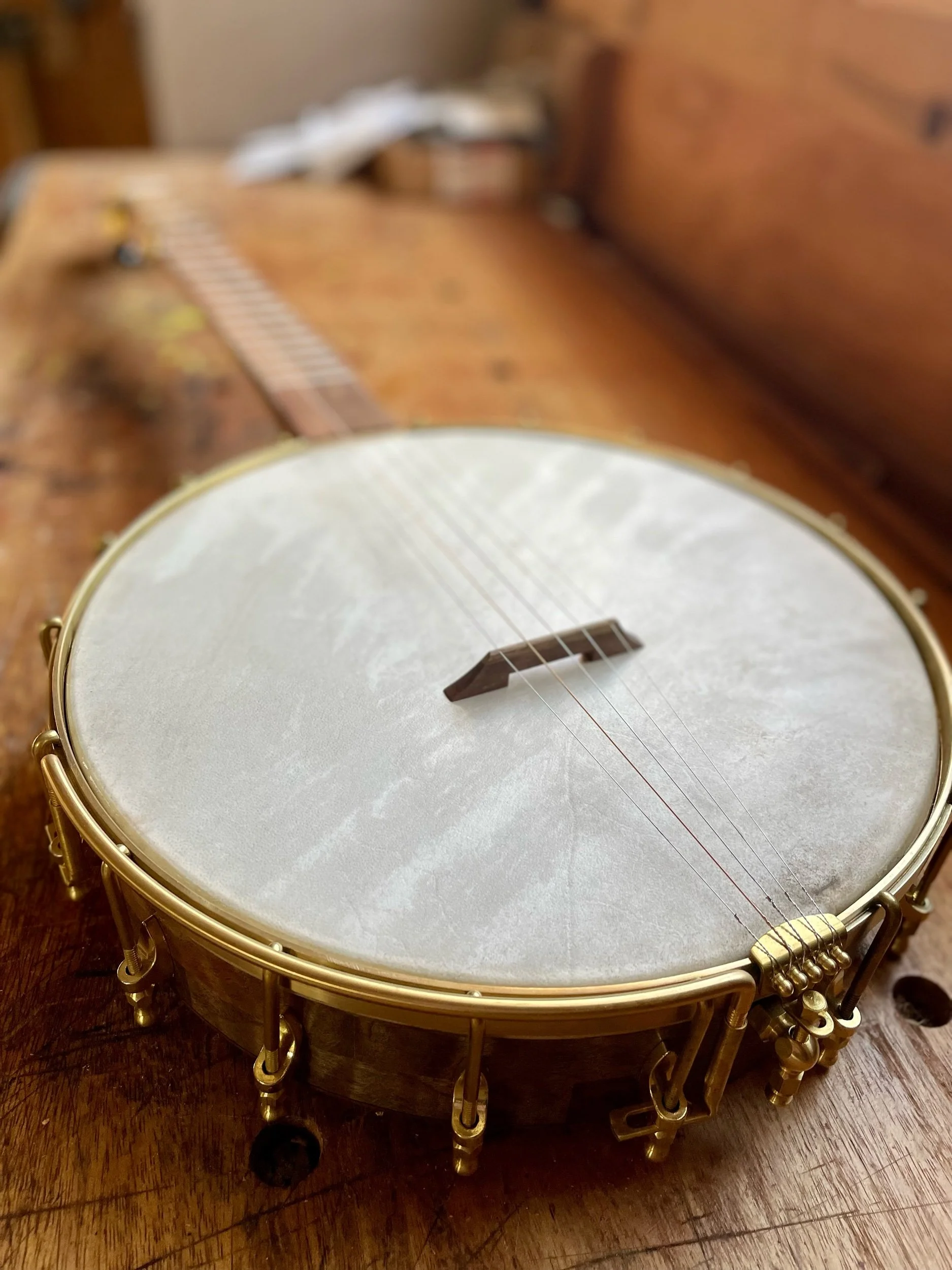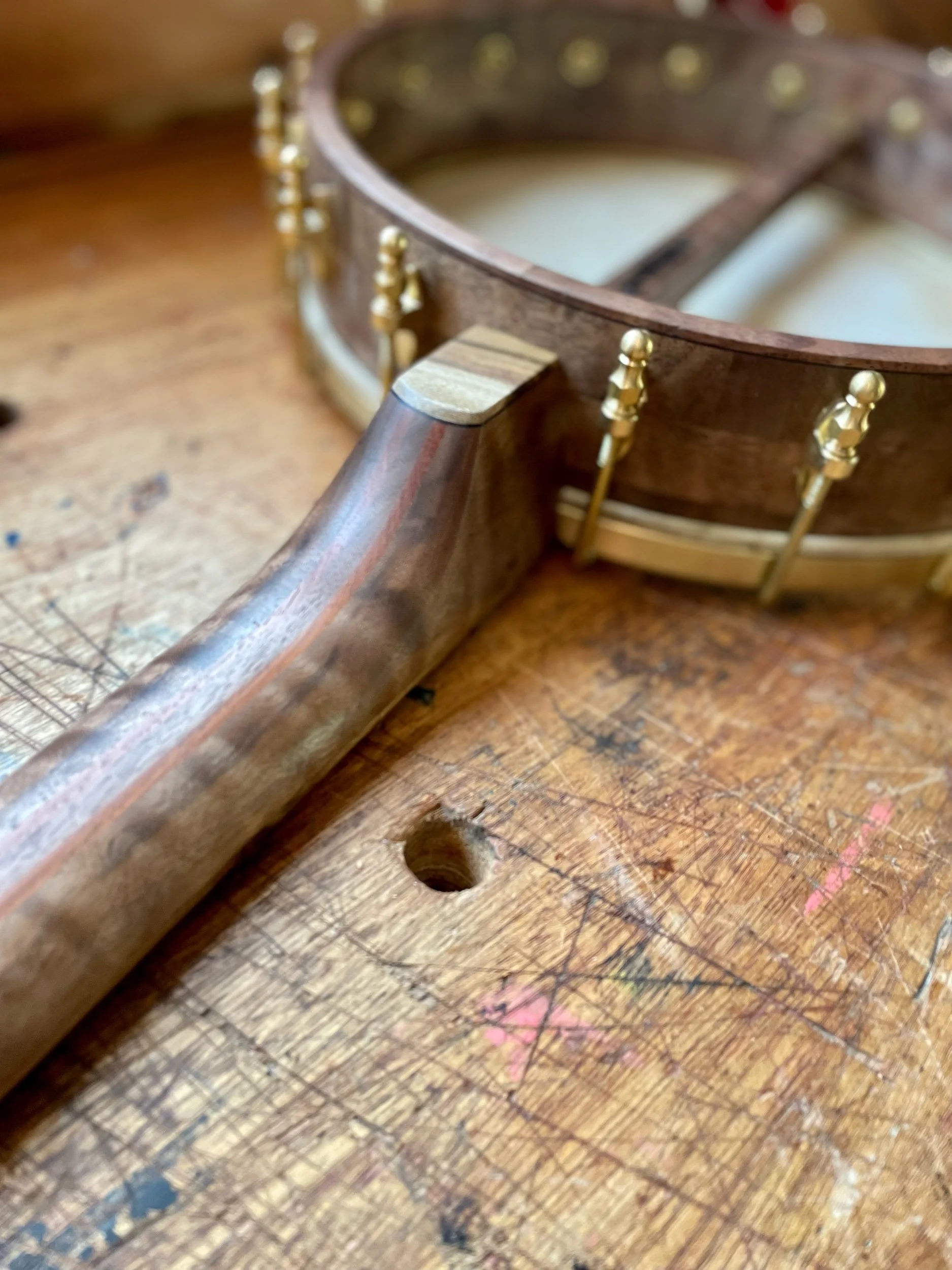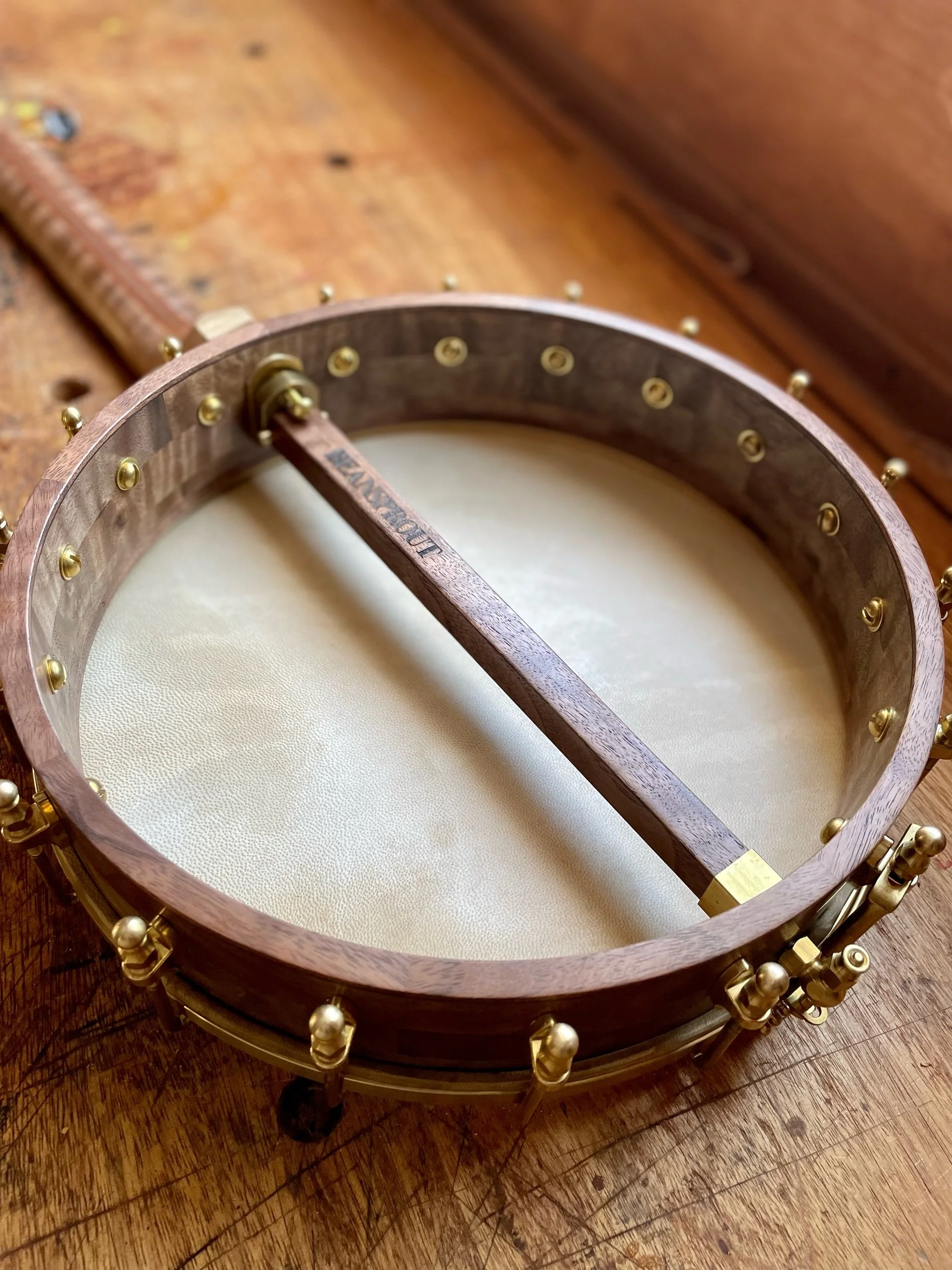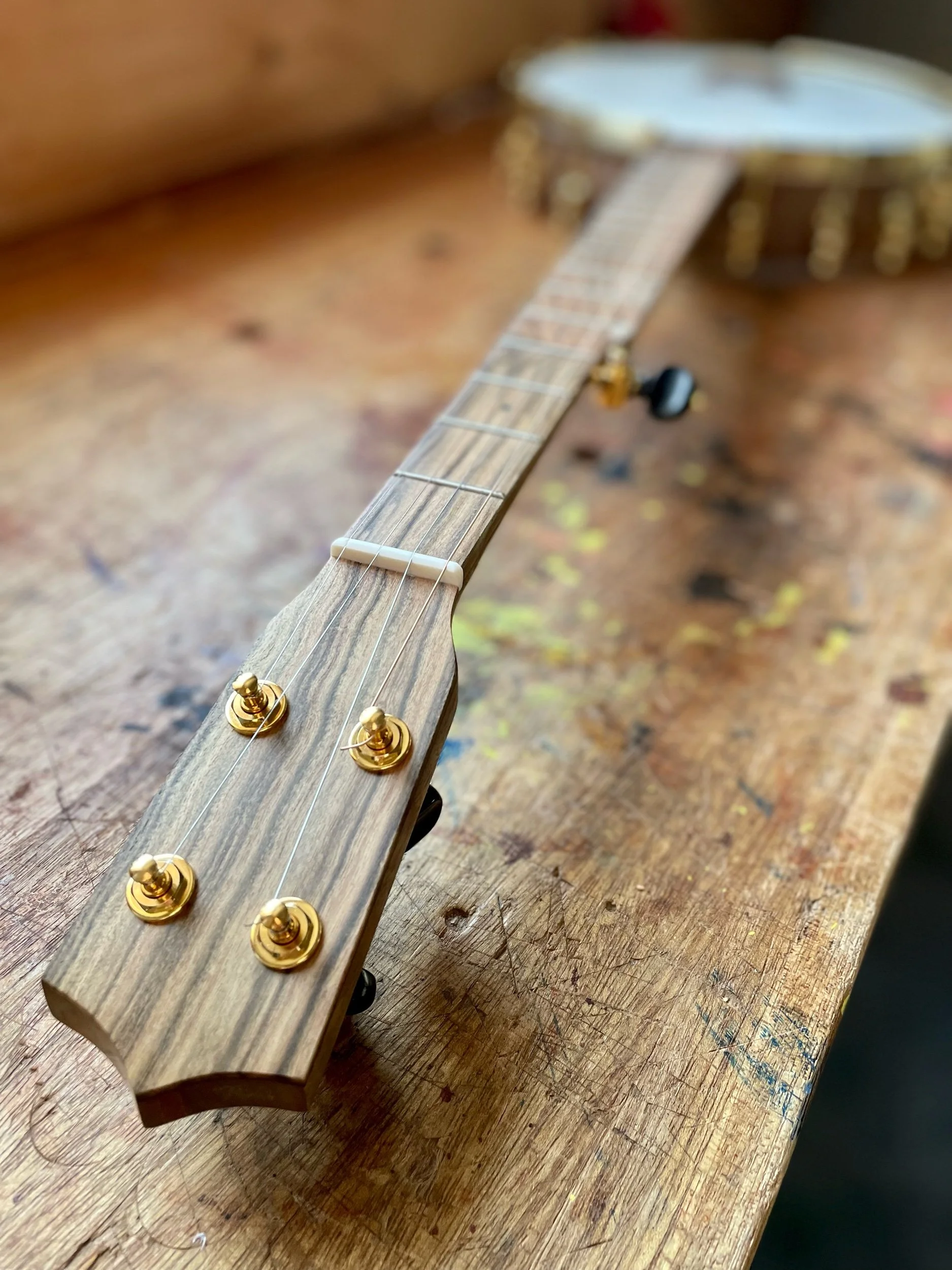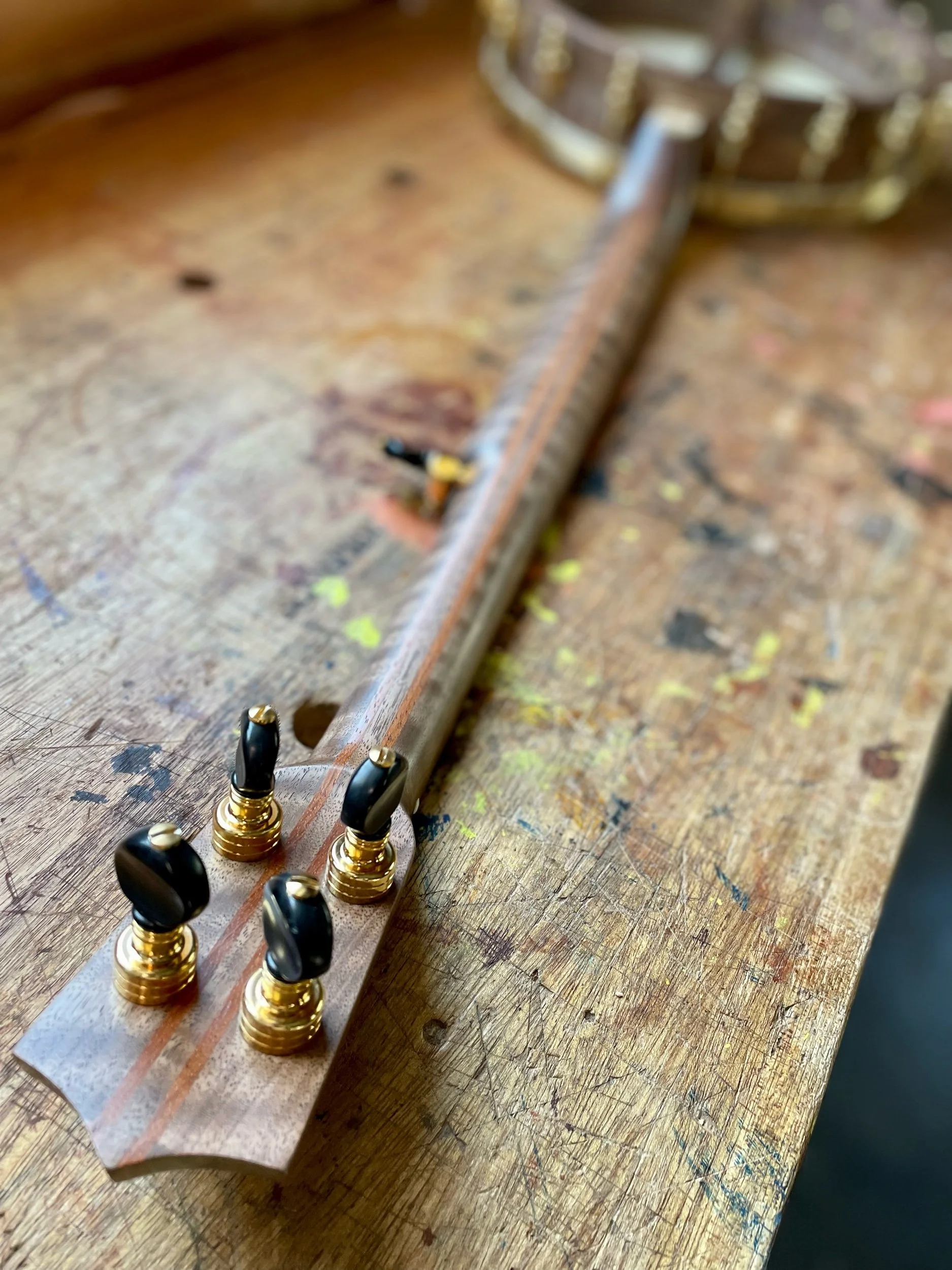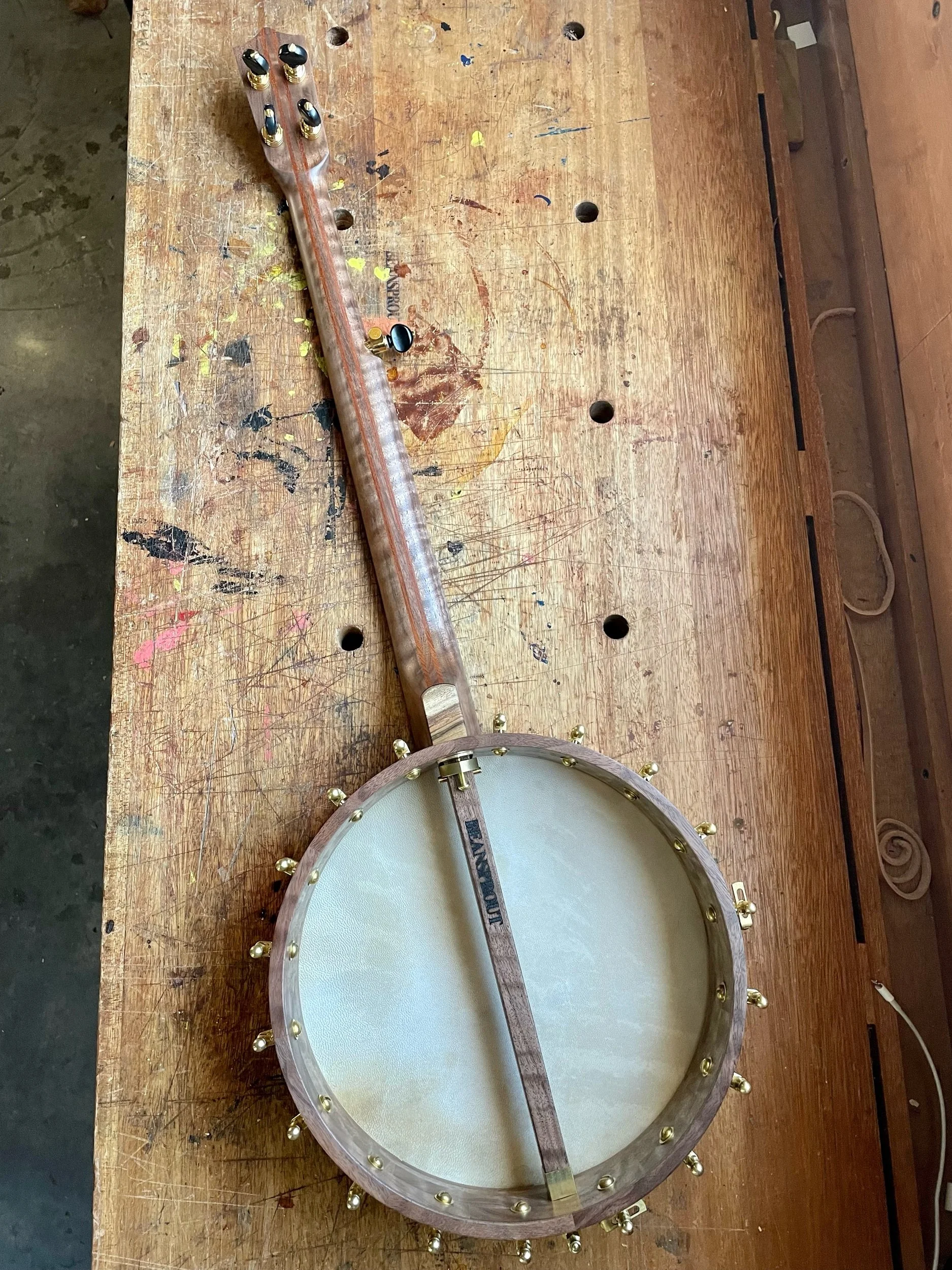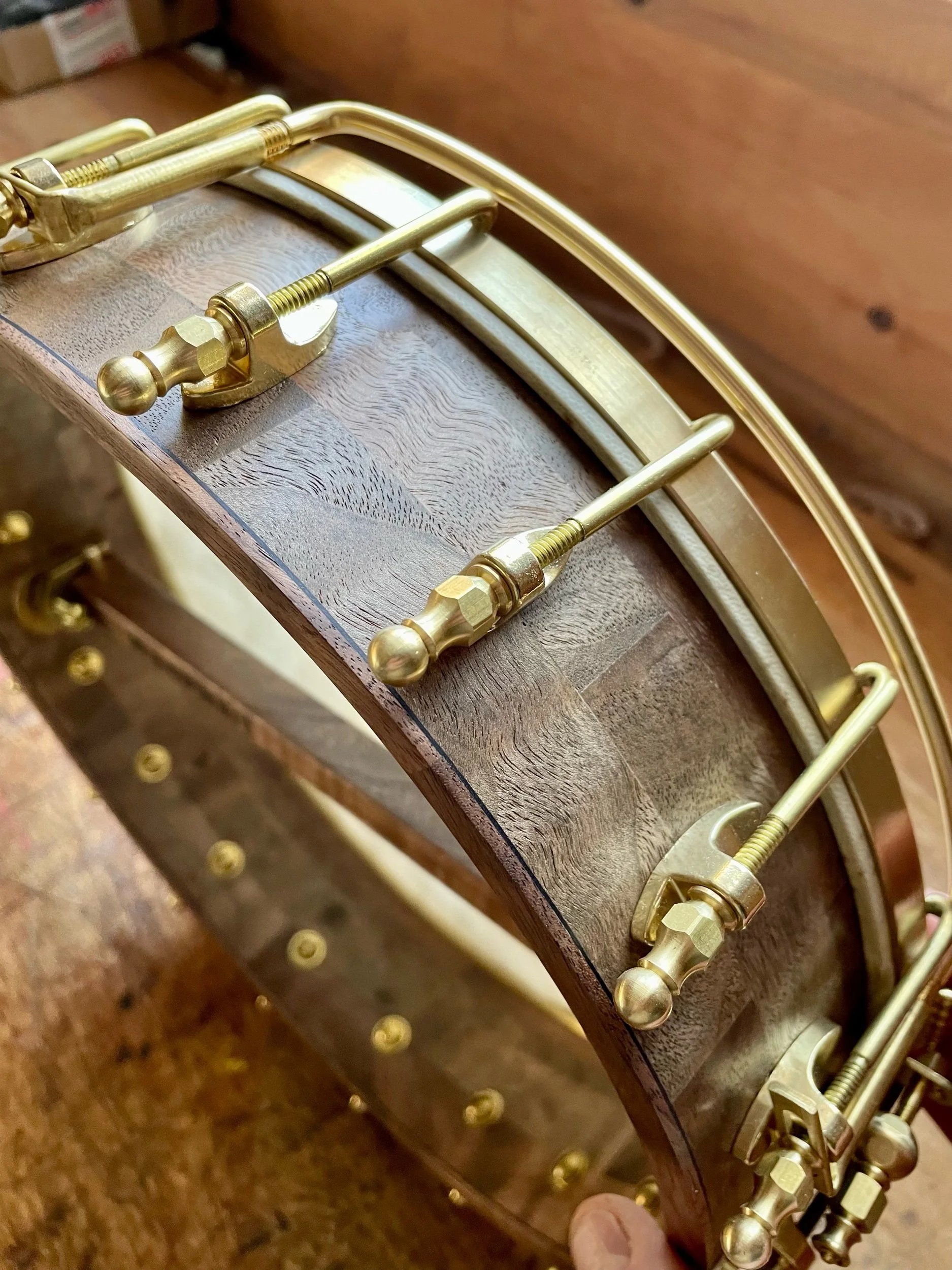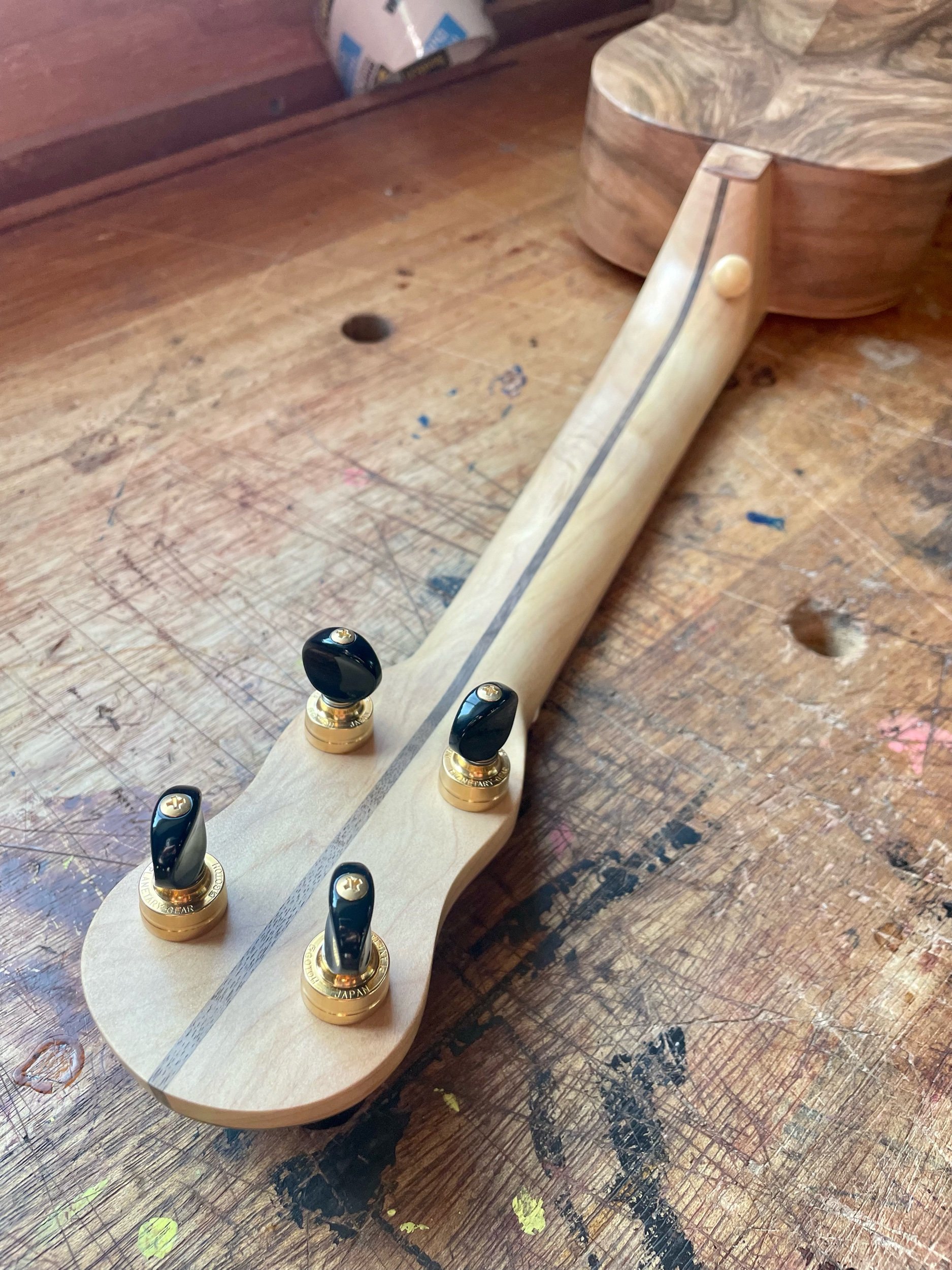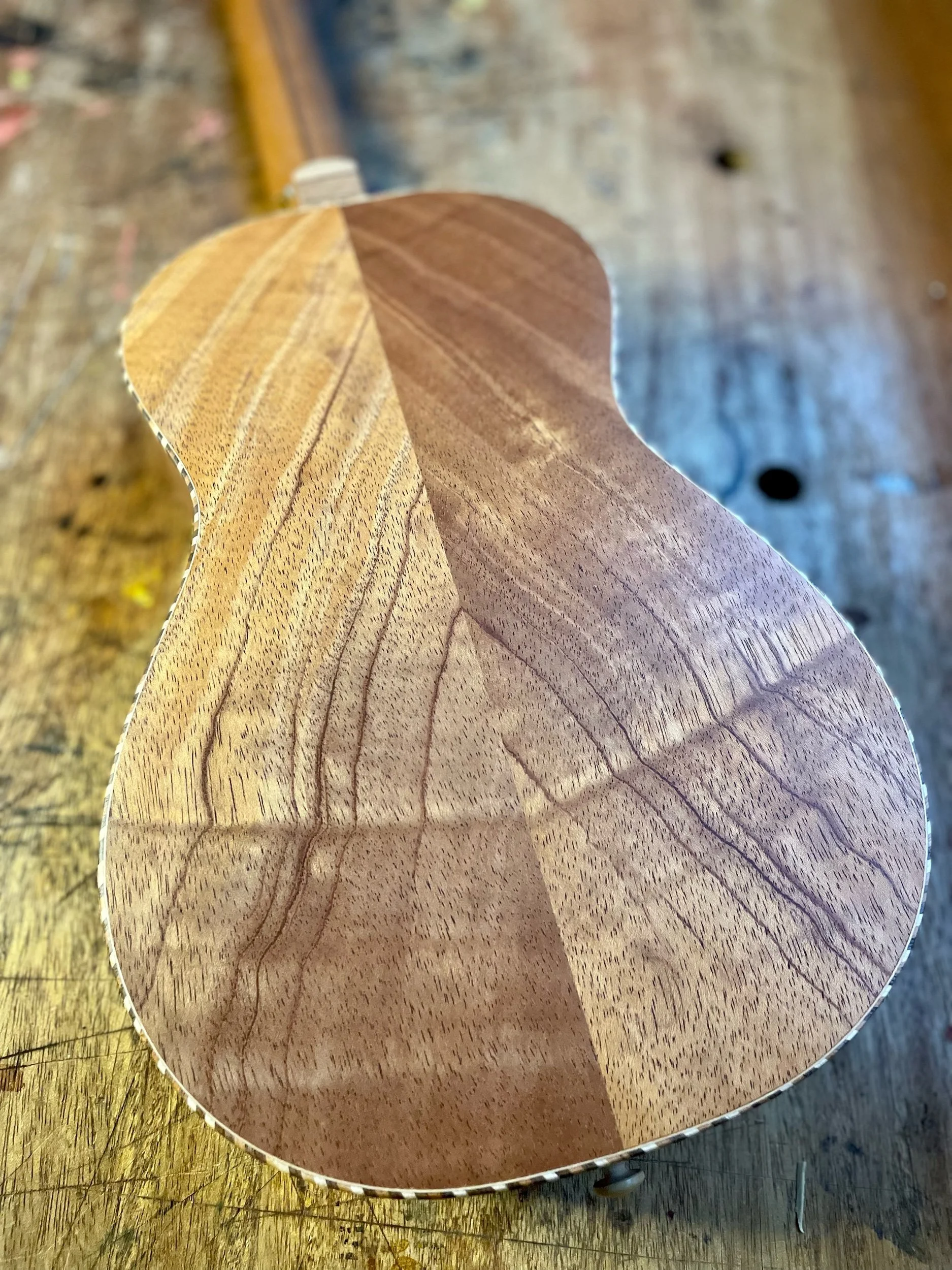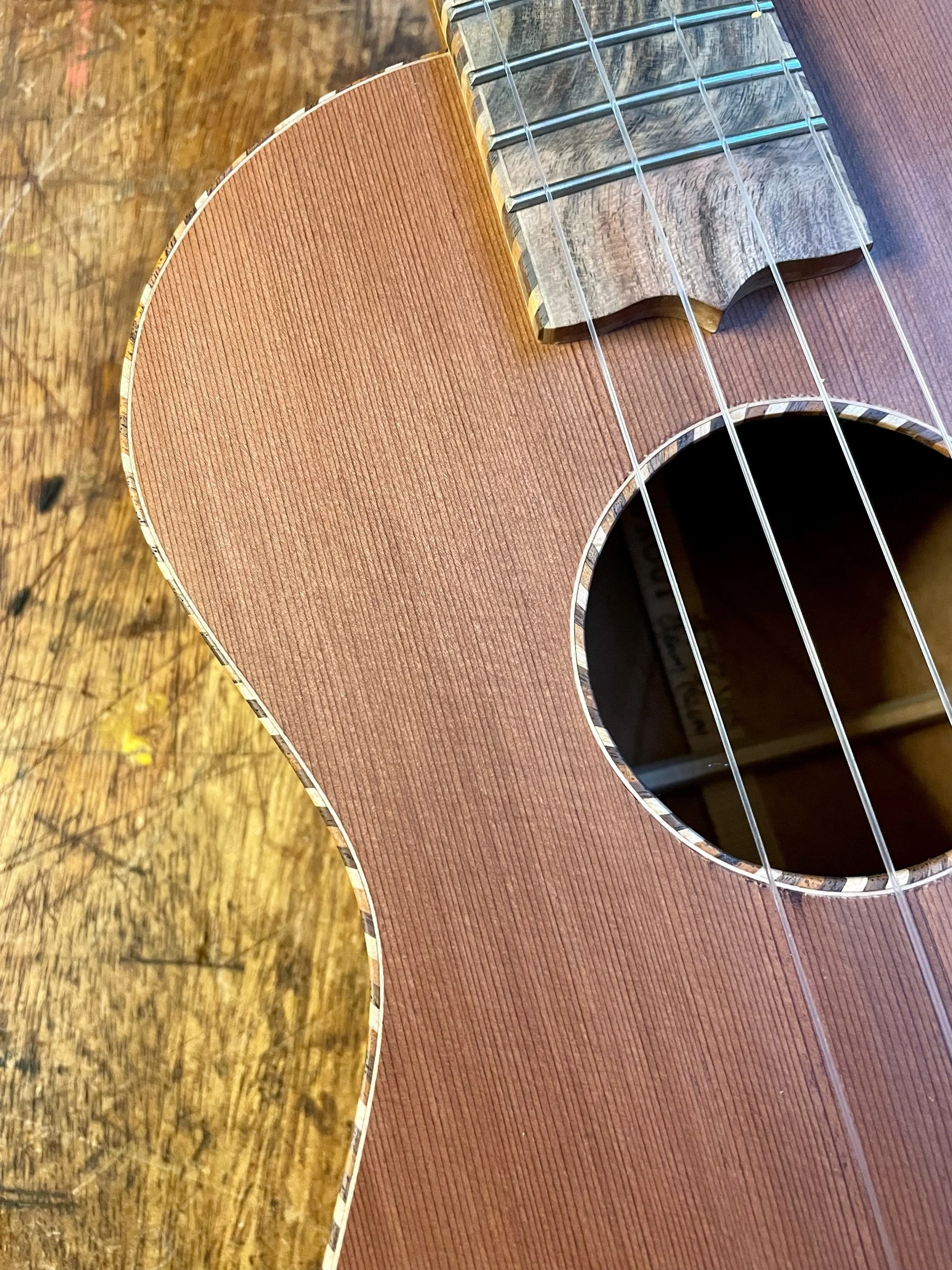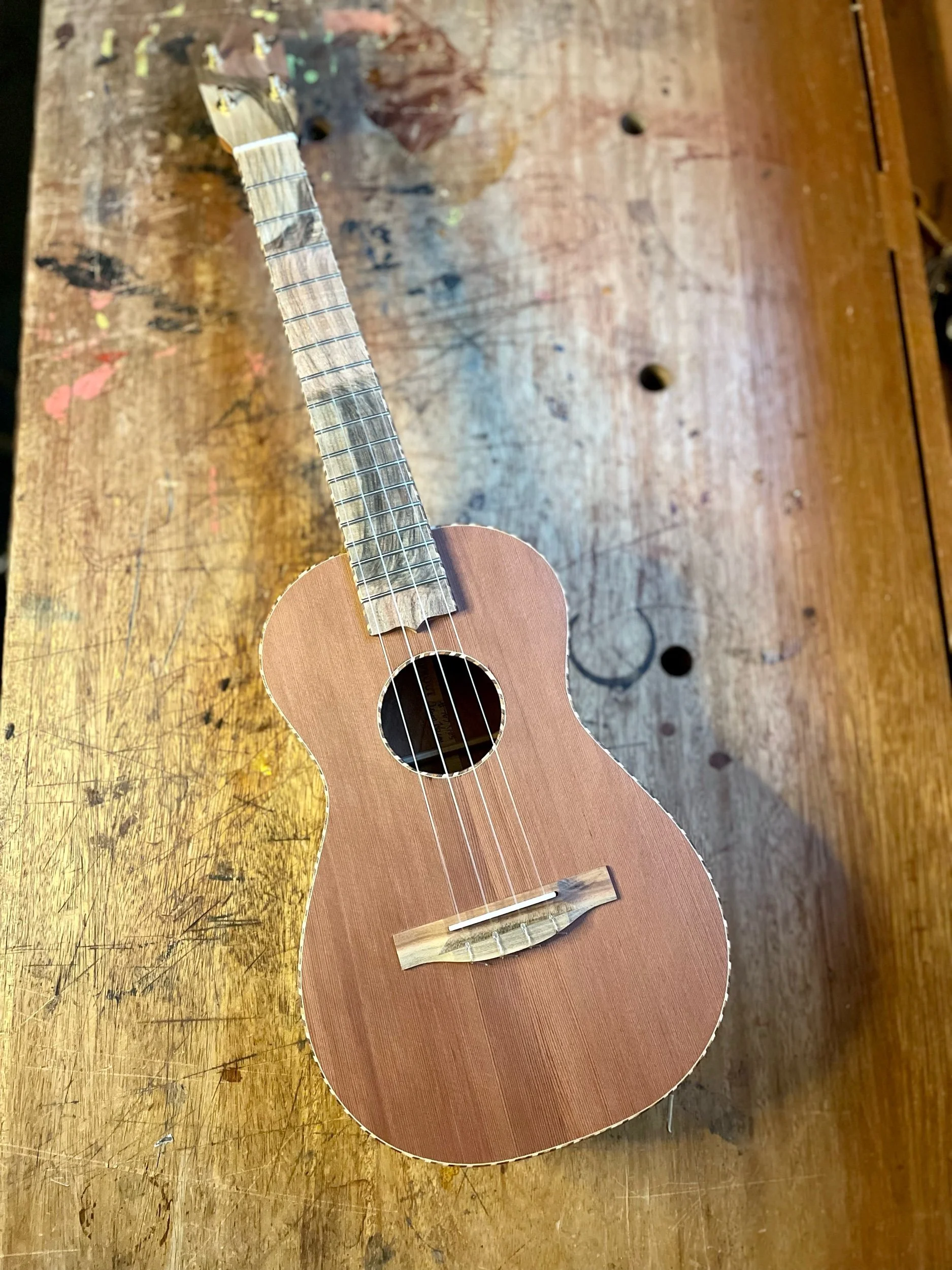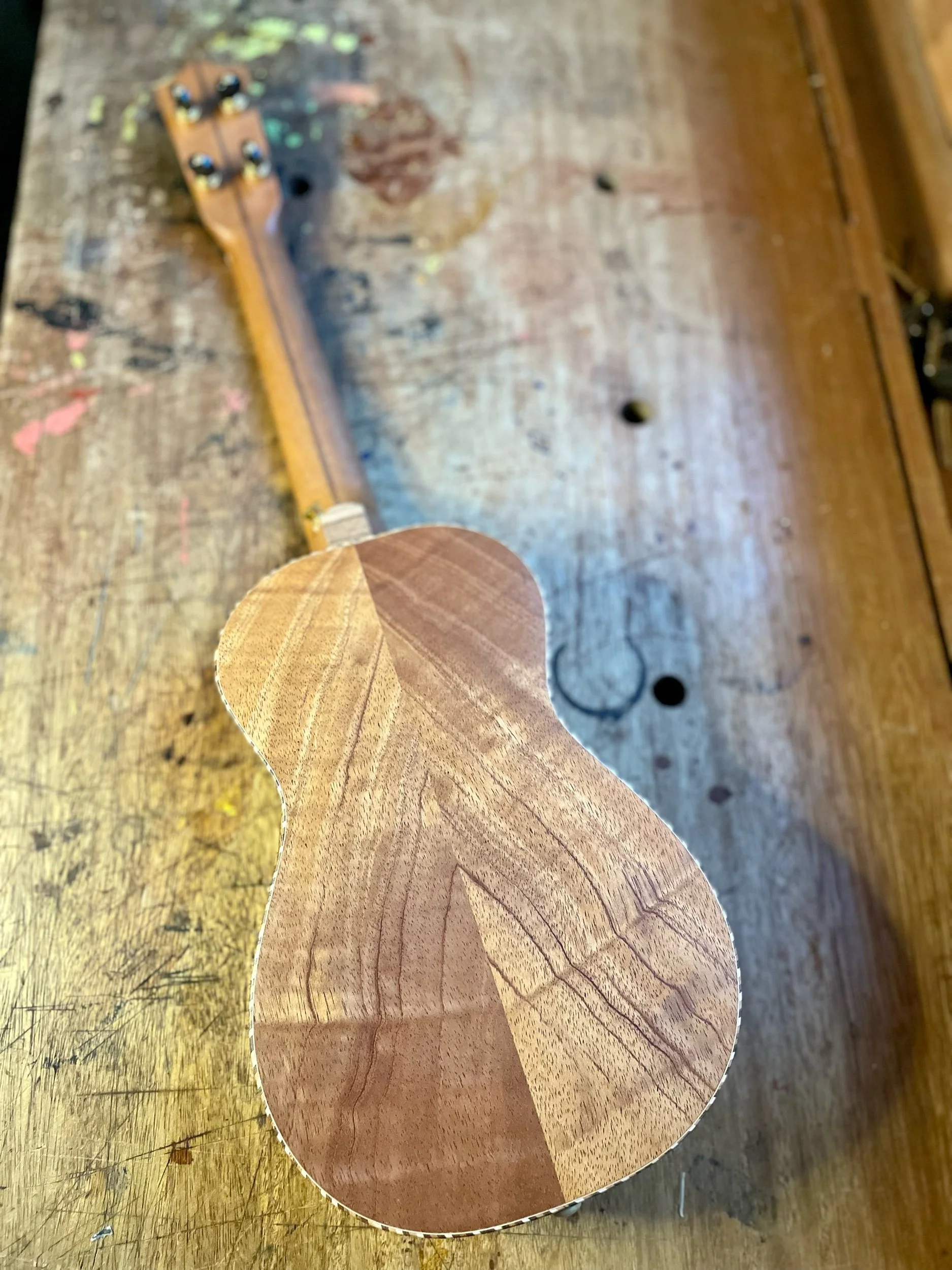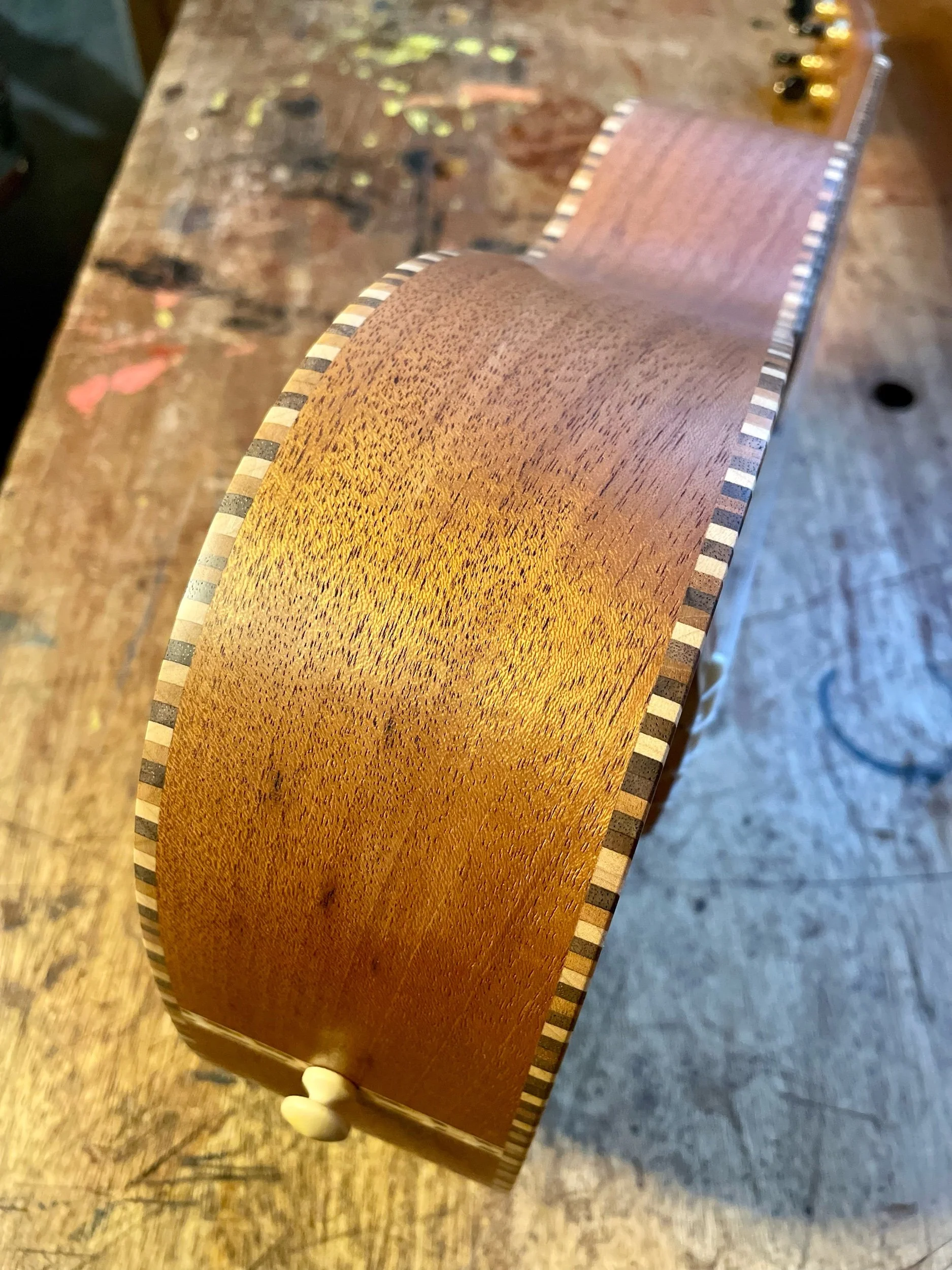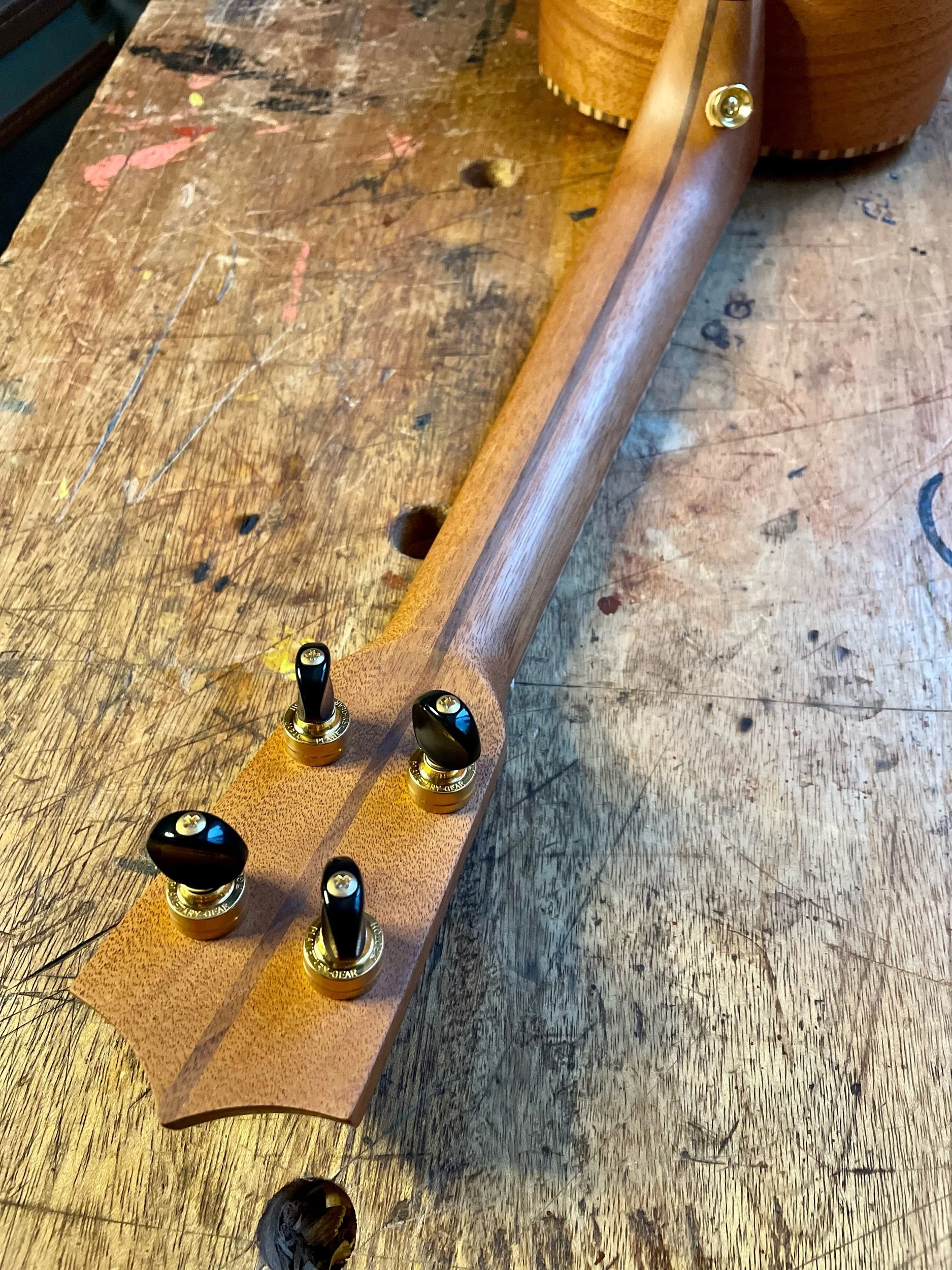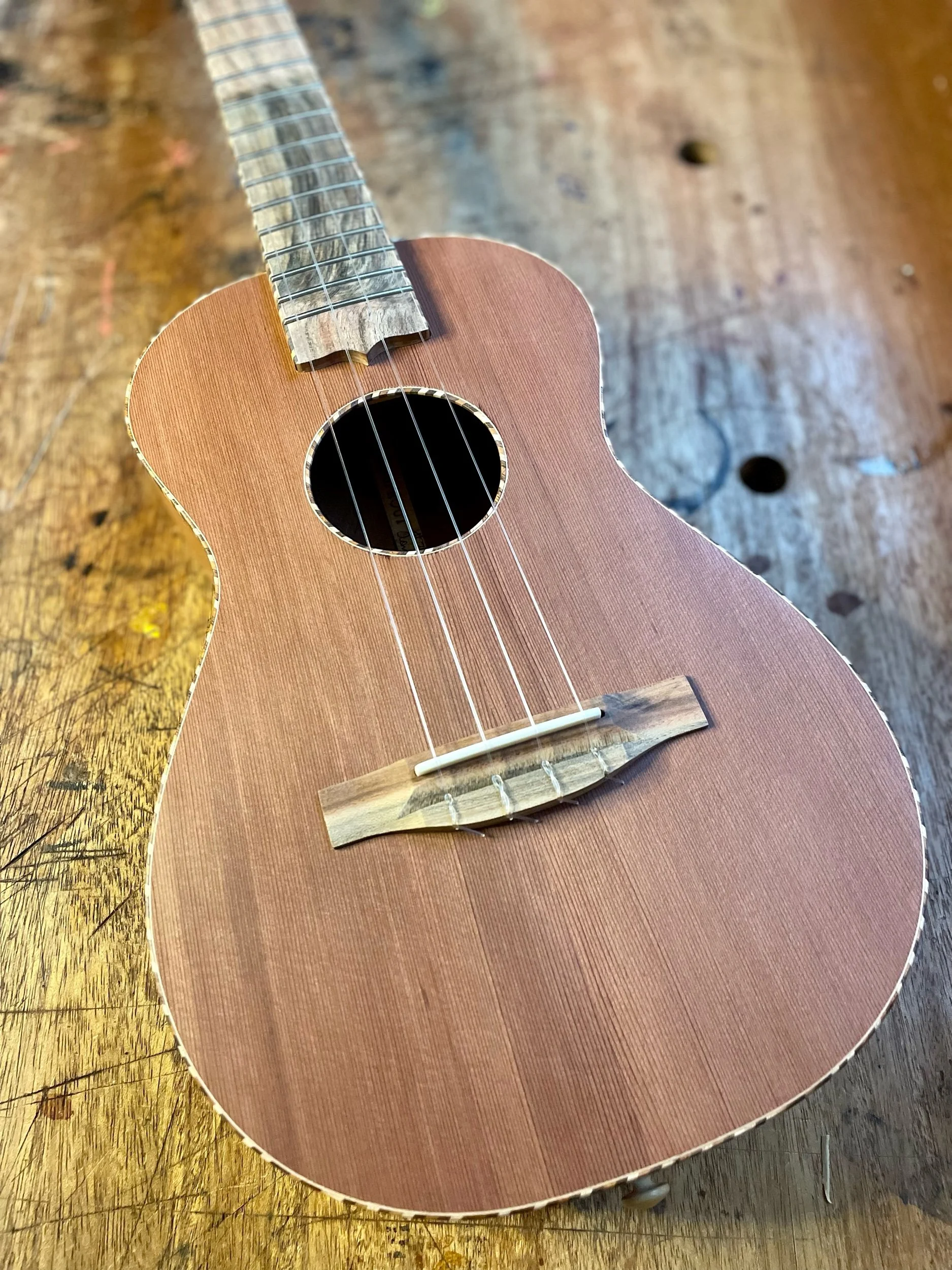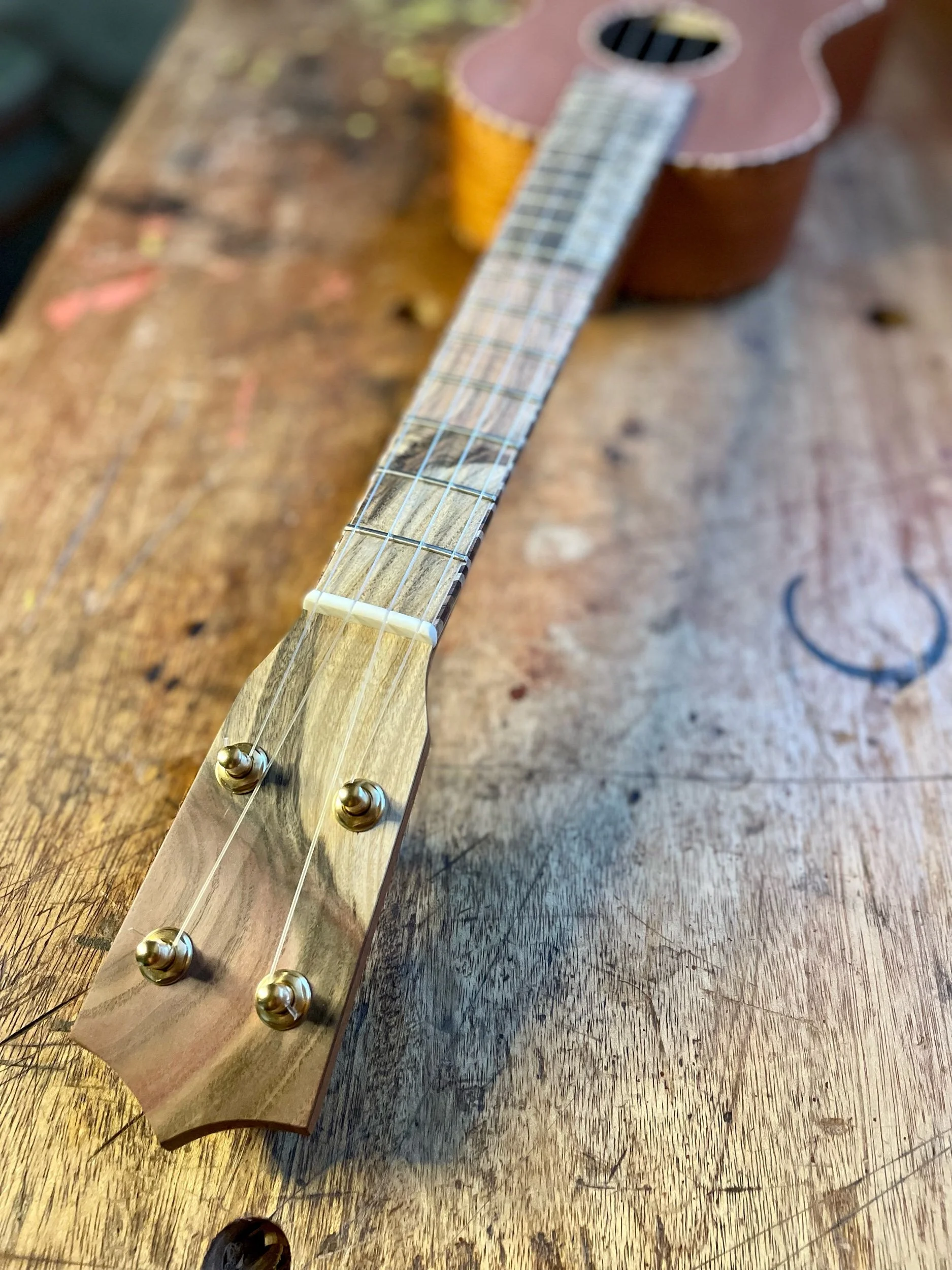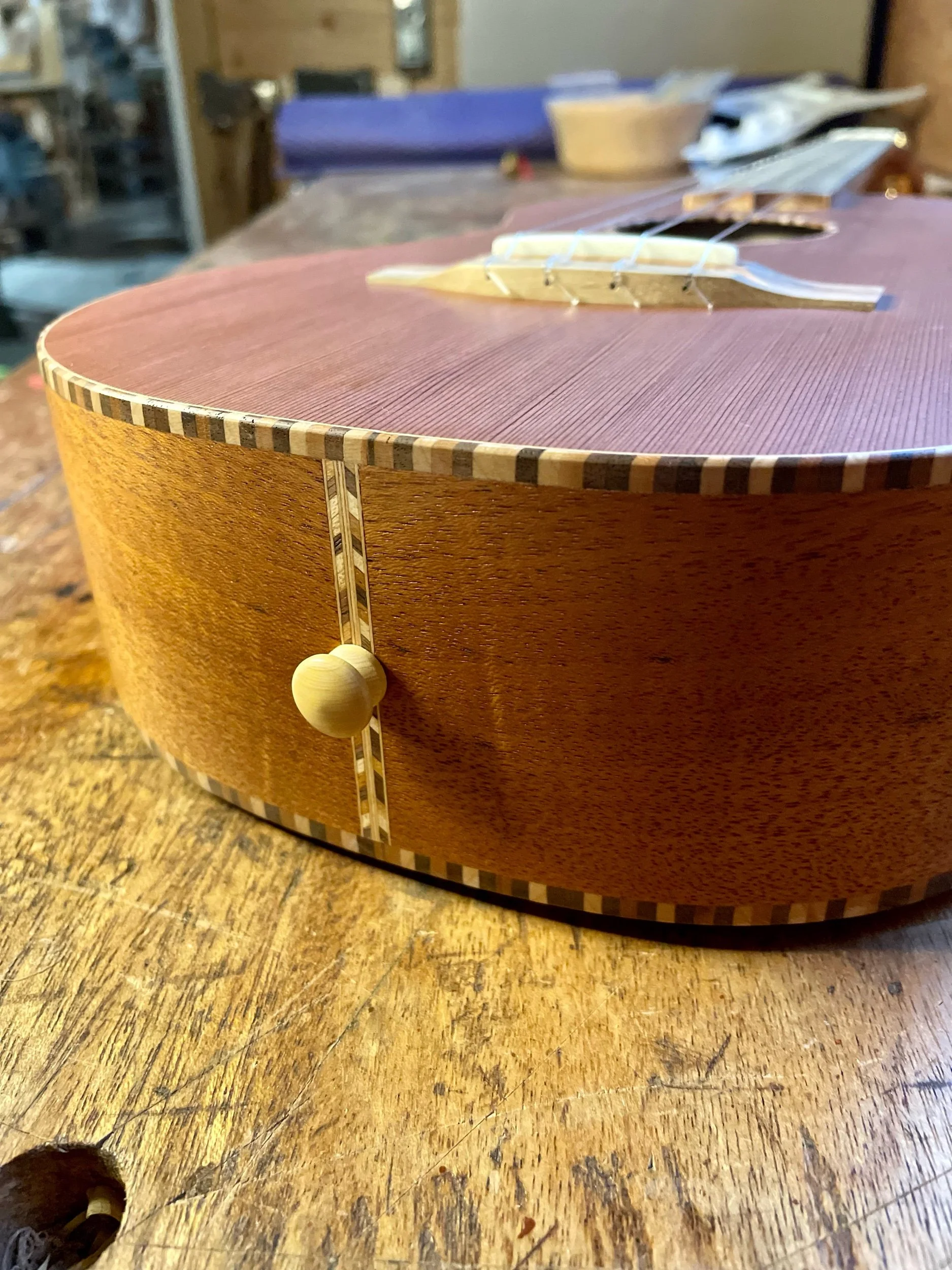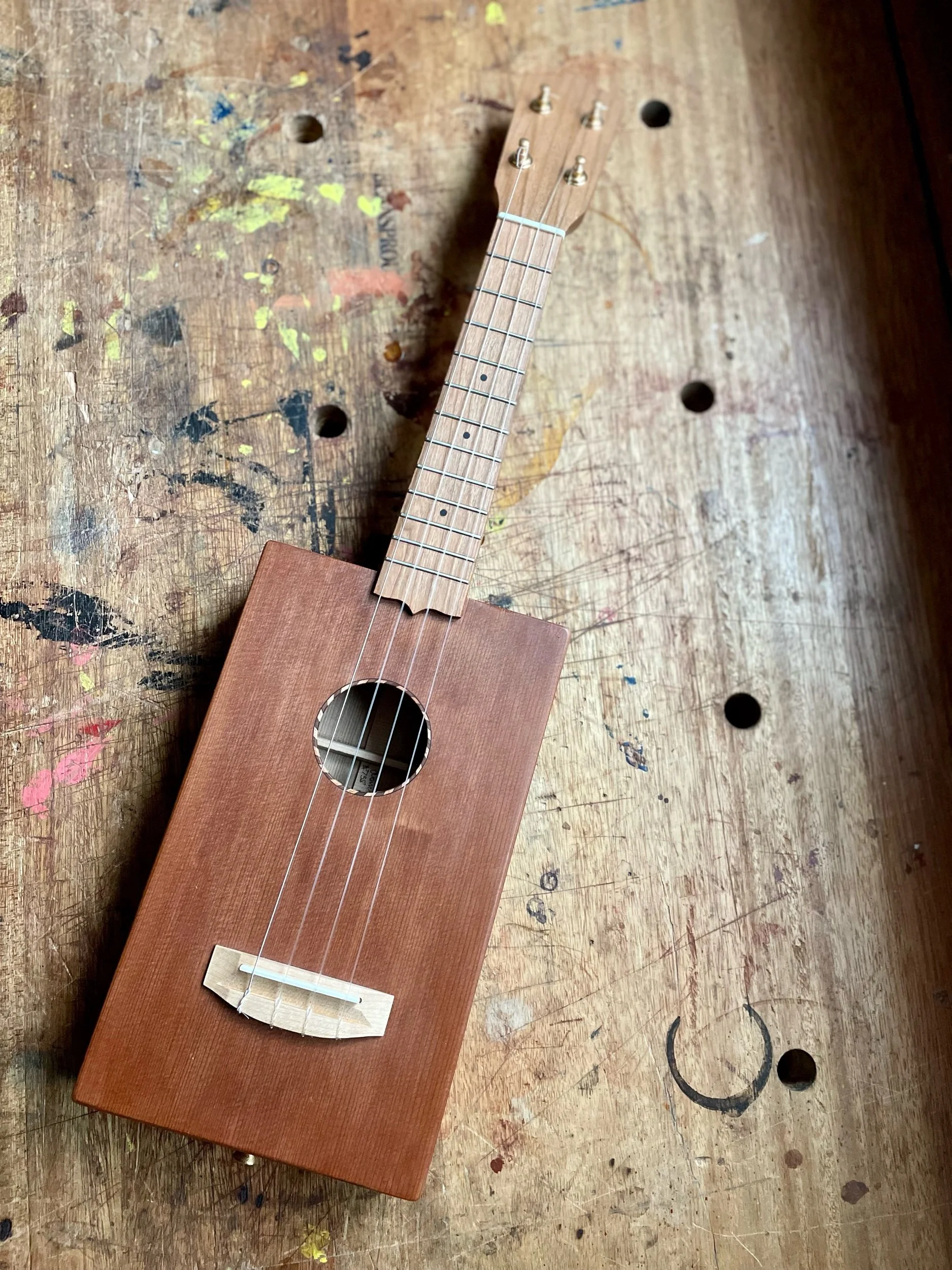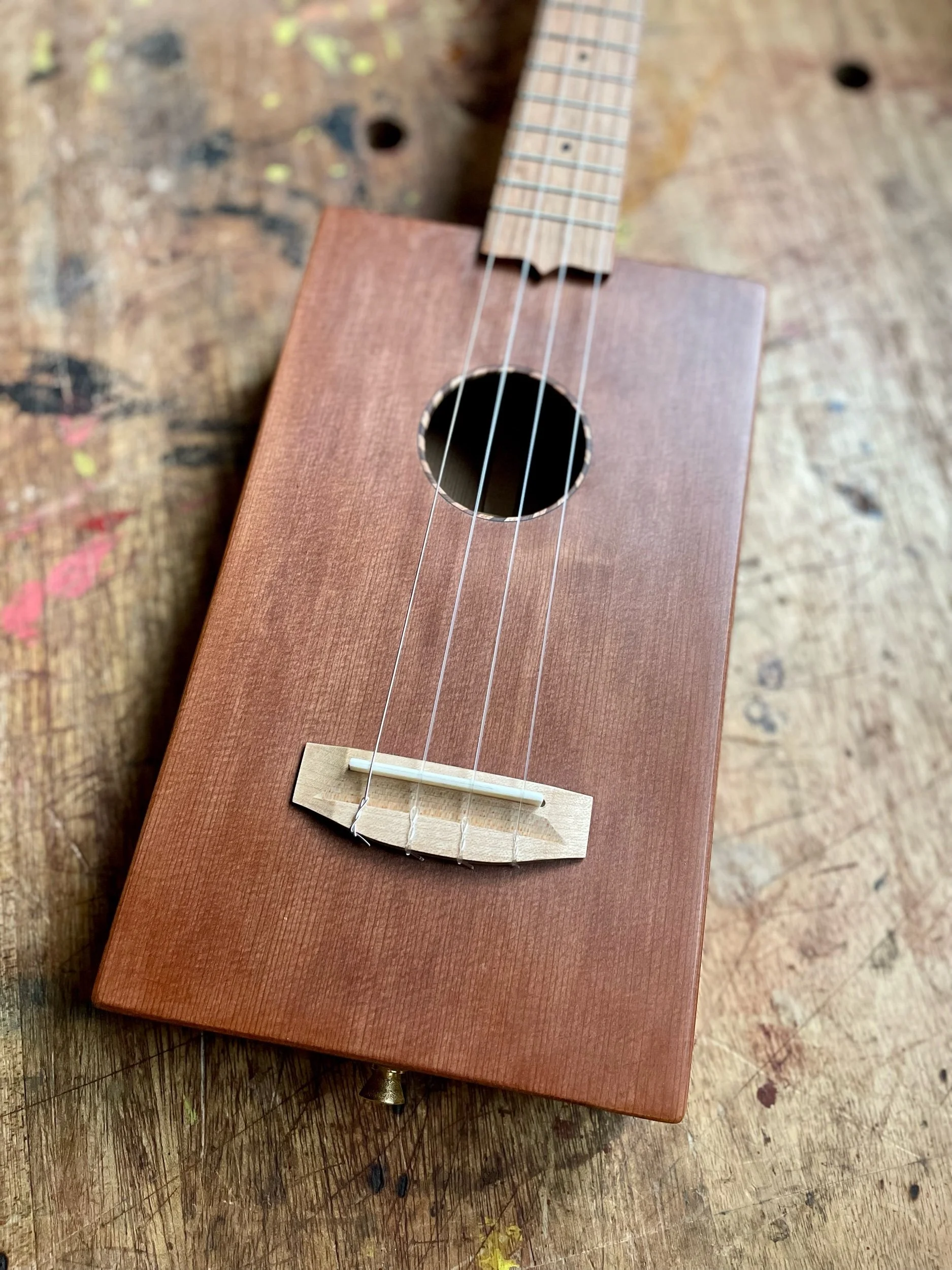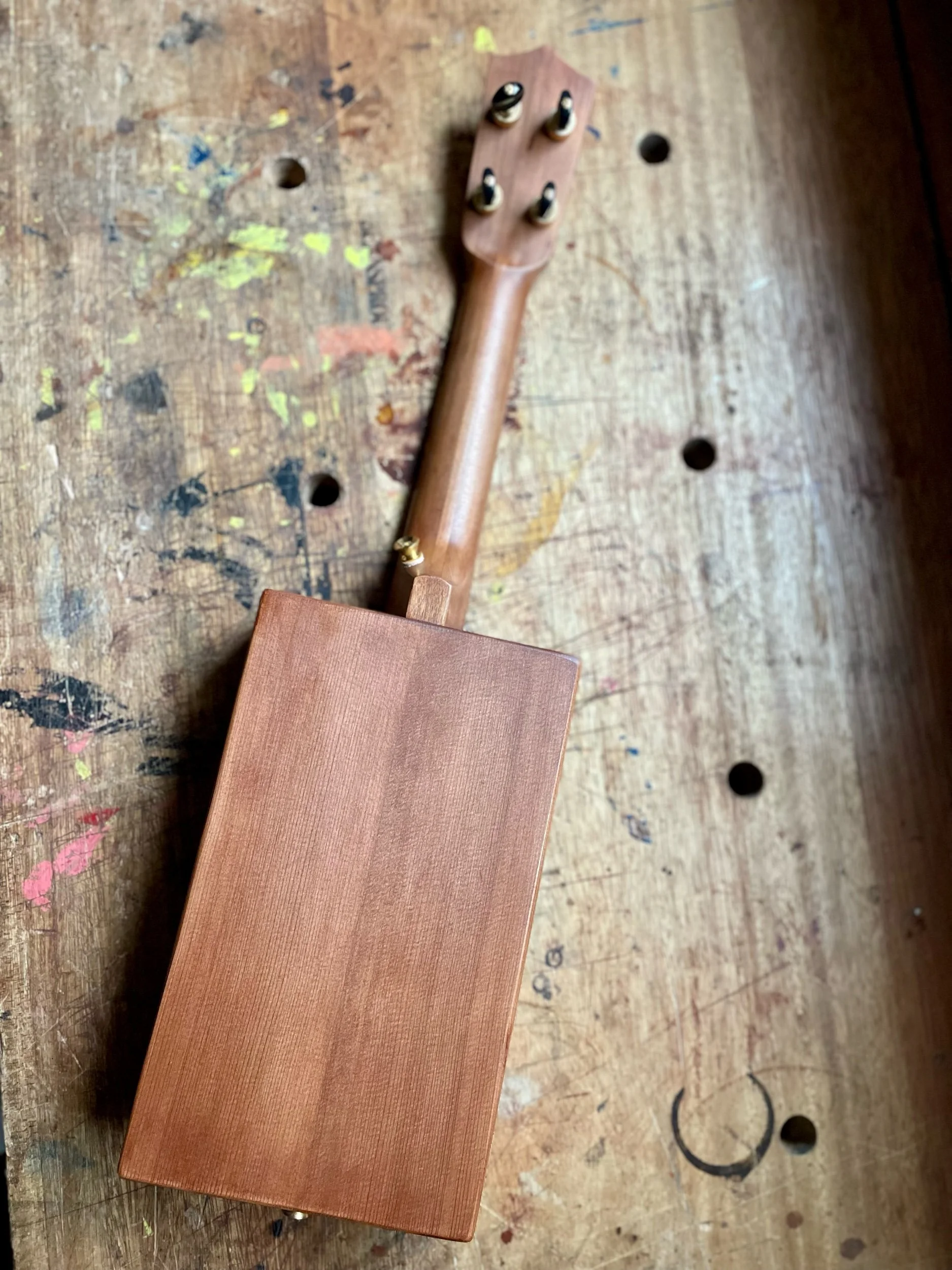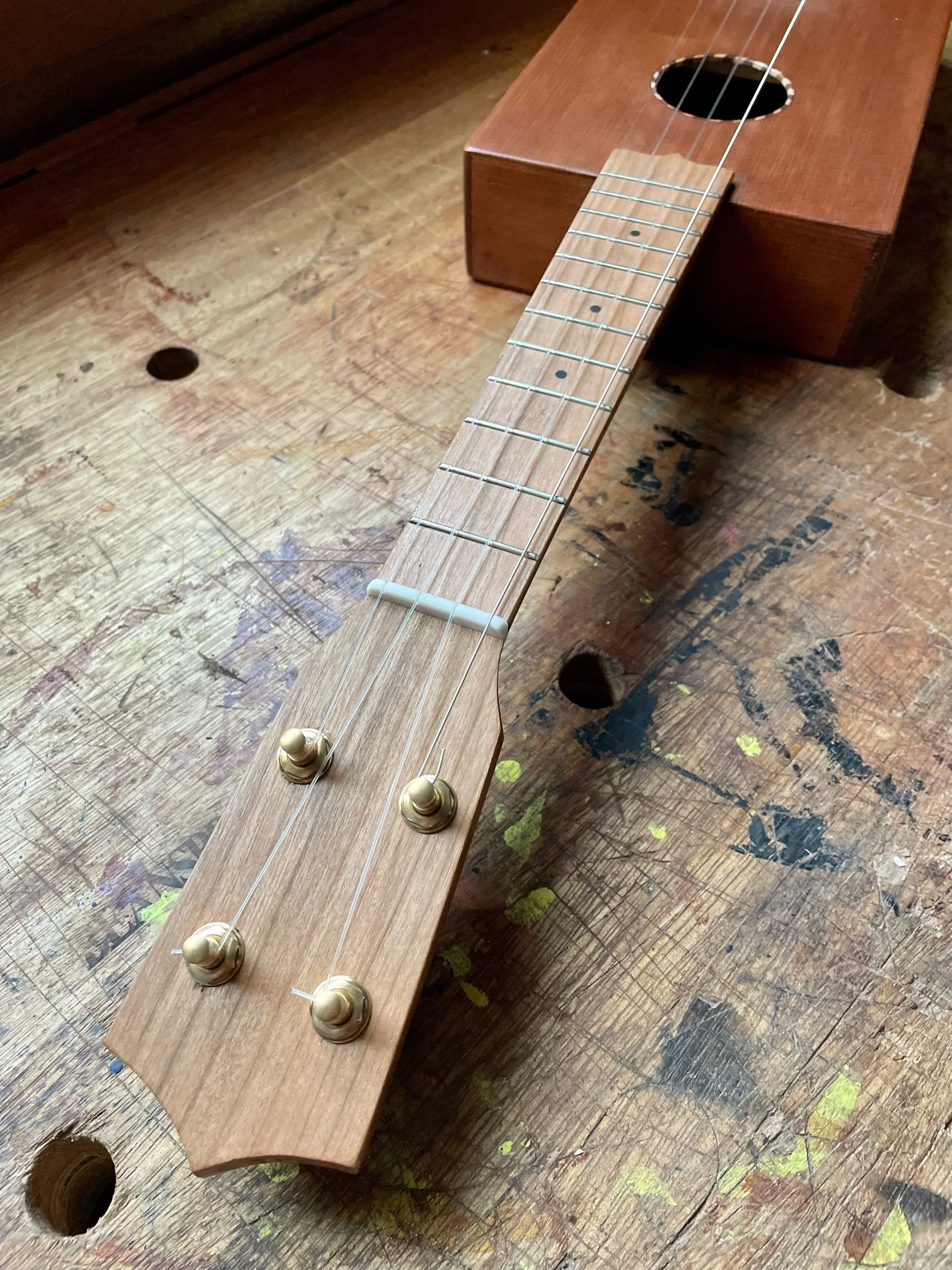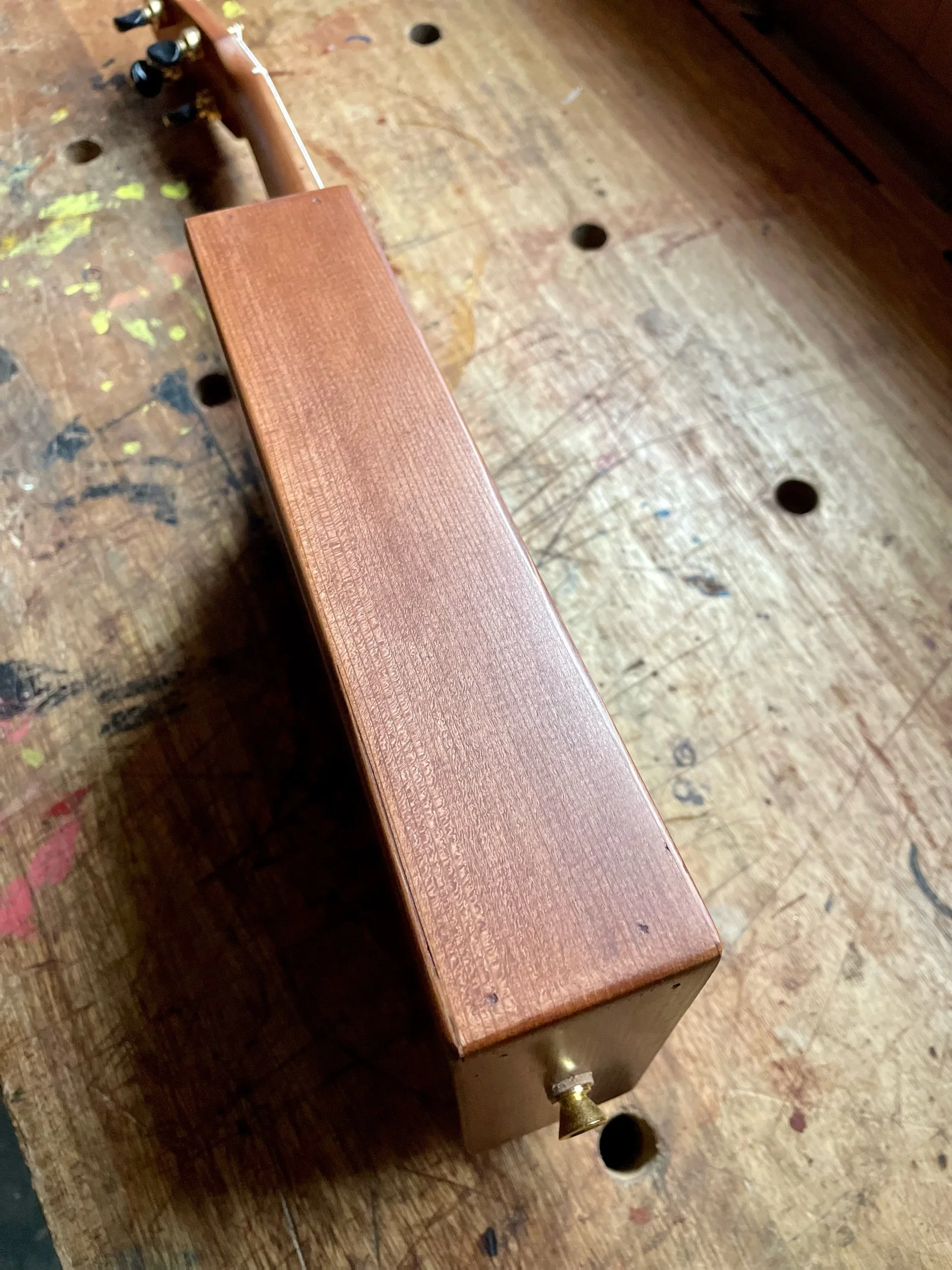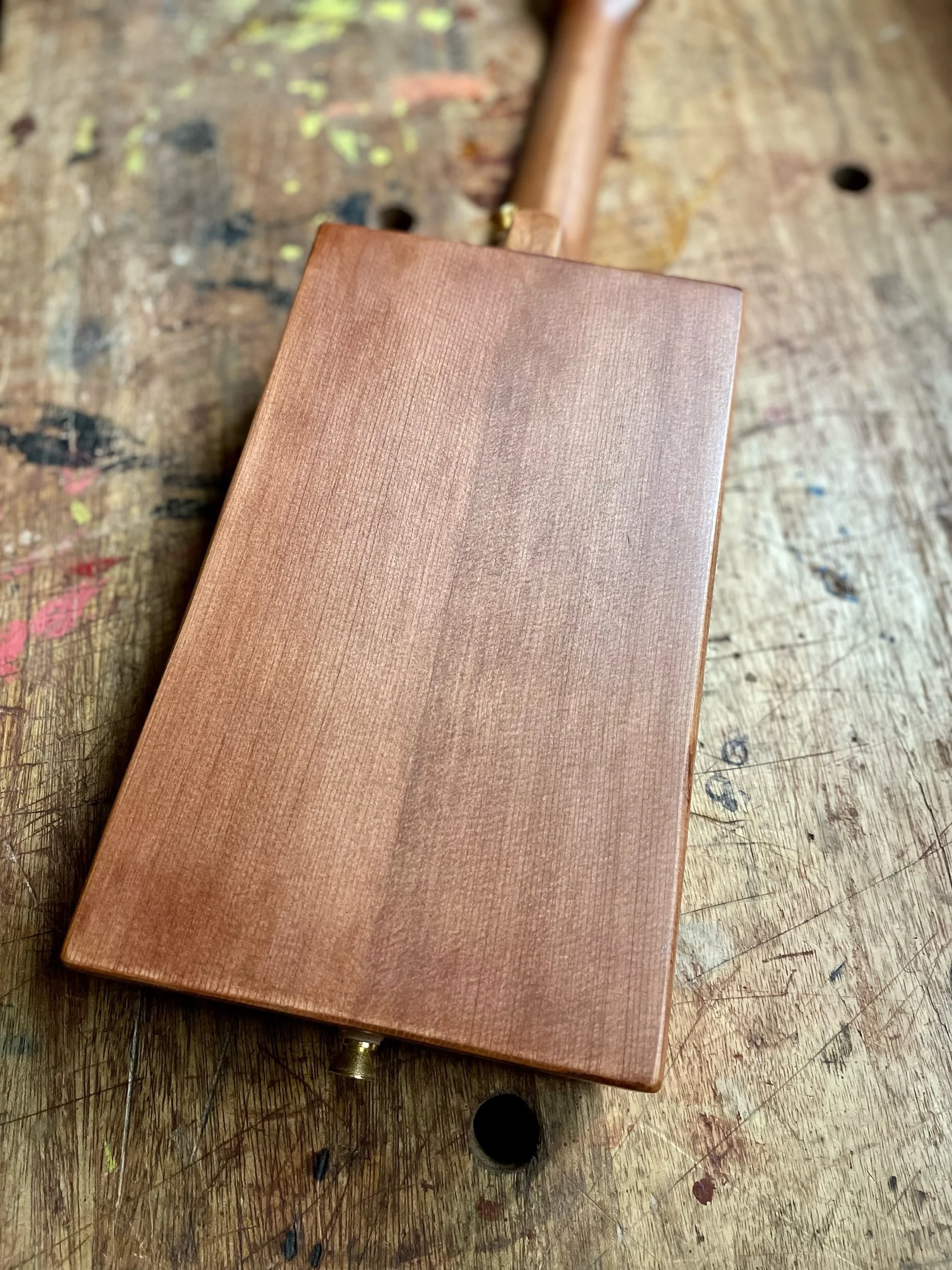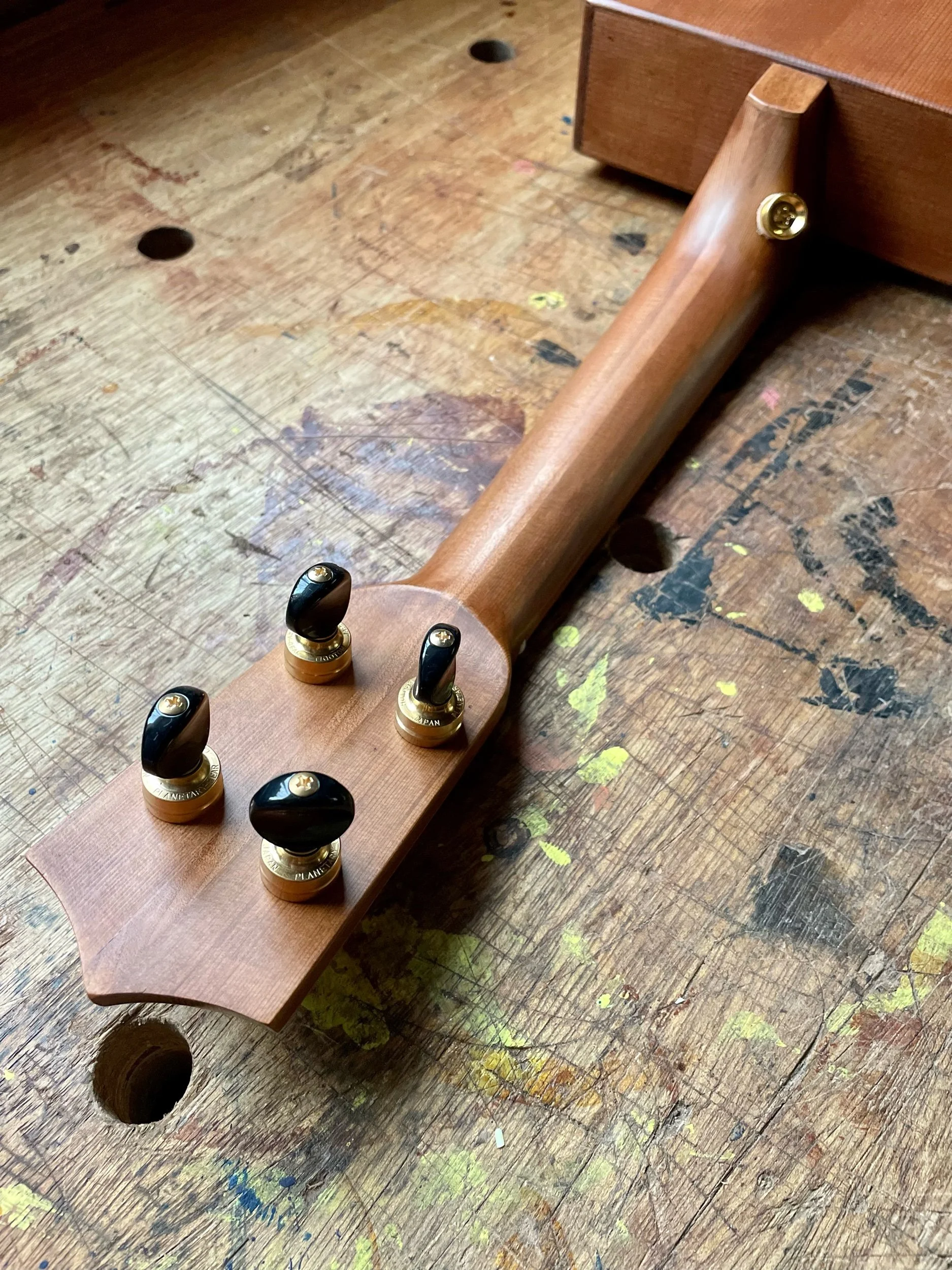I have enough good options for top woods that I sometimes forgot how nice they are. This Port Orford Cedar top surprised me, although I should know better by now, POC is always good! Bright, rich, detailed, crisp with nice sustain. This POC top and the curly POC neck came from my neighbors garage, originally cut for flutes. The curly Cherry was a great choice for back and sides, from the Carpenter Ant Stash. Top it off with a grafted Pistachio fretboard from California orchards. All around, a really nice uke that shows off what I do well. Thanks for the order, Susan!
“Dear Aaron and Nicole,
My new ukulele arrived today safe and sound. I am so excited! It is just lovely and it sounds so wonderful! The card including info about the ukulele is great and I will keep it in the case.
The craftsmanship is just the best.
Keep up the good work,
- S. G. ”



















































